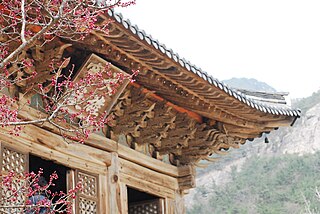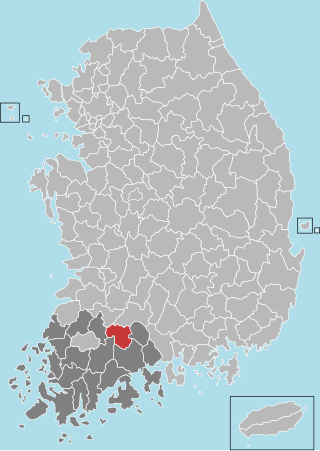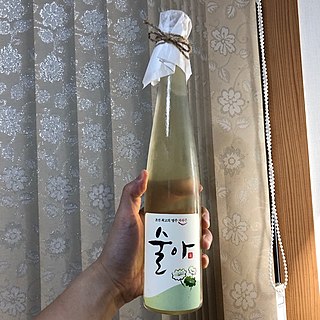Korea has had administrative districts that can be considered provinces since the 7th century. These divisions were initially called ju in Unified Silla and Later Baekje, and there were nine in total. After Goryeo conquered these states in the 10th century, twelve divisions called mok were established, although they were reorganized into ten do in the 11th century.

North Jeolla Province, officially Jeonbuk State, is a Special Self-governing Province of South Korea in the Honam region in the southwest of the Korean Peninsula. Jeonbuk borders the provinces of South Chungcheong to the north, North Gyeongsang and South Gyeongsang to the east and South Jeolla to the south.

Jeolla Province was one of the historical Eight Provinces of Korea during the Kingdom of Joseon in southwestern Korea. It consisted of the modern South Korean provinces of North Jeolla, South Jeolla and Gwangju Metropolitan City as well as Jeju Province. The provincial capital was Jeonju, the current capital of North Jeolla. The entire inland region was called Honam, which is still commonly used today.

The Jeolla Line (Korean: 전라선) is a railway line in North and South Jeolla Provinces in South Korea. The line is served by frequent passenger trains from Seoul to Yeosu.

Gokseong County is a county in Jeollanam-do, South Korea and the least densely populated subdivision of the province.

Namwon is a city in North Jeolla Province, South Korea. Namwon is about 50 minutes from the provincial capital of Jeonju, which is almost three hours away from Seoul. The official city flower is Royal Azalea (철쭉) while the city tree is the crape-myrtle (배롱나무) and the city bird is the swallow (제비). Namwon is a small city located just outside Jirisan National Park, which has the largest set of mountains on the South Korean Mainland. It also borders the Seomjin River, one of South Korea's more prominent rivers. It is 3 hours and 15 minutes from the Seoul Central City Bus Terminal and about one hour from both the U-Square Bus Terminal in Gwangju and the Jeonju Inter City Bus Terminal. It is called "the City of Love" because of the famous Korean love story of Chunhyang. Gwanghanlu Garden is a shrine to this love story.

Imsil County is a county in North Jeolla Province, South Korea. Imsil County is a county in central South Jeolla Province, South Korea. It is an area upstream of the Seomjingang River in the Noryeongsan Mountains, and there is a basin that runs southeast to Namwon. The county office is located in Imsil-eup, and the administrative district is 11 myeon, 1eup.

Kim Wan-ju is a South Korean politician who was the 32nd governor of the South Korean province of North Jeolla from 2006 to 2014; he was also the mayor of the South Korean city of Jeonju from 1998 to 2006. During his tenure, Kim was a strong proponent of regional development, historical preservation and new paradigms of local and decentralized government.

Nokdu-muk is a Korean muk, or jelly, made from mung bean starch. In its most commonly encountered form, it is also called cheongpo-muk, which literally means "clear froth jelly," owing to its clear white color. If it is colored with gardenia, the nokdu-muk is called hwangpo-muk, which literally means "yellow froth jelly."
The Jeolla dialect of the Korean language, also known as Southwestern Korean, is spoken in the Jeolla (Honam) region of South Korea, including the metropolitan city of Gwangju. This area was known as Jeolla Province during the Joseon era. However, it is believed that the dialect dates to the Baekje kingdom with Chungcheong Dialect. Like the Chungcheong dialect, the Jeolla dialect is considered non-standard. Pansori texts are written in the Jeolla dialect.
Seo Sun-Hwa is a female South Korean sports shooter who competed in 10 metre air rifle at the 2004 Summer Olympics, where she finished 27th. She set the first women's 10 metre air rifle world record with 400 points at the 2002 ISSF World Cup 1st Grand Prix in Sydney, Australia.

Gwaha-ju is a traditional Korean fortified rice wine. The refined rice wine cheongju is fortified by adding the distilled spirit soju to produce gwaha-ju. Popular varieties include gangha-ju (강하주) of Boseong and Yeonggwang in South Jeolla Province, sinseon-ju (신선주) of Namwon in North Jeolla Province, and yak-soju (약소주) of Suwon in Gyeonggi Province.
Korea Polytechnics (Korean: 한국폴리텍대학) mean two or three-years public vocational school in South Korea. It has 11 colleges in 34 cities.
National Route 17 is a national highway in South Korea. It connects the city of Yeosu to the cities of Suncheon, Namwon, Jeonju, Daejeon, Cheongju, and Yongin.
National Route 24 is a national highway in South Korea connects Sinan County to Nam District, Ulsan. It established on 31 August 1971.
National Route 21 is a national highway in South Korea connects Namwon to Icheon. It established on 31 August 1971.
National Route 19 is a national highway in South Korea connects Namhae County to Hongcheon County. It established on 31 August 1971.
Namwon Dokgo clan is one of the Korean clans. Their Bon-gwan is in Namwon, North Jeolla Province. According to research conducted in 2000, the number of Namwon Dokgo clan members was 452. Their founder was Dokgo Gongsun who was from Henan. Dokgo Gongsun was one of the Eight Scholars in Tang dynasty and was naturalized at the end of Silla. Dokgosin, a descendant of Dokgo Gongsun, became Prince of Namwon. Then, Dokgo sin founded Namwon Dokgo clan and made Namwon, Namwon Dokgo clan's Bon-gwan.
National Route 13 is a national highway in South Korea connects Wando County to Geumsan County. It established on 31 August 1971.
Local Route 37 Namwon–Geochang Line is a local route of South Korea that connecting Namwon, South Jeolla Province to Geochang County, South Gyeongsang Province.









